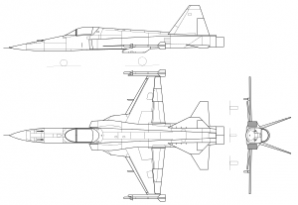
Iranian Air Force Spokesman General Hossein Chitforoush announced on Wednesday that the country has started production of its home-made Saeqeh fighter jets in large numbers.
“The fighter jet is now on the way of mass-production,” Chitforoush said in an interview with the state-run news agency.
He reminded the double-cockpit model of Saeqeh that was unveiled last year, and said Iran now has several squadrons of Saeqeh, while the future generations of the fighter jet will even be more advanced.
In September 2010, Iran displayed the first squadron of Saeqeh in an air show staged during the military parades at the beginning of the Week of Sacred Defense, marking Iranians’ sacrifices during the 8 years of Iraqi imposed war on Iran in 1980s.
In September 2011, the Iranian Air Force’s first squadron of home-made Saeqeh fighter jets started operations during the large offensive air drills codenamed “Fadaeeyan-e Harim-e Vellayat III” in Northwestern Iran.
In related news on 26 August 2012, deputy Defence Minister Mohammad Eslami announced that an upgraded version of the Saeqeh would be introduced in the Iranian Air Force by the end of 2013
See video: HESA Saeqeh (Thunderbolt) https://www.youtube.com/watch?v=c0sZ3Kpahi8
Saeqeh fighter General characteristics
•Crew: 1
•Length: 15.89 m ()
•Wingspan: 8.13 m ()
•Height: ()
•Empty weight: 4,400 kg ()
•Loaded weight: 9,000 kg ()
•Powerplant: 2 × turbojet
Performance
•Maximum speed: 917 kn (Mach 1.6, 1,060 mph, 1,700 km/h)
•Range: 3,000 km
•Service ceiling: 16,000 m
•Rate of climb: 175 m/s
Armament
•Guns: 2× 20 mm (0.787 in) M39A2 Revolver cannons in the nose, 280 rounds/gun
•Hardpoints: 7 total: 2× wing-tip AAM launch rails, 4× under-wing & 1× under-fuselage pylon stations with a capacity of 7,000 pounds (3,200 kg)
Note: The Commander of the Islamic Republic of Iran Air Force, Brigadier-General Ahmad Mighani, said that the Saeqeh is up-to-date in terms of aerodynamic balance and in possessing missile and radar systems.

